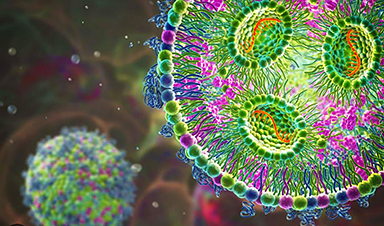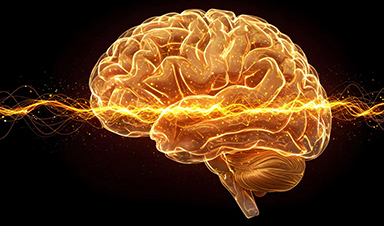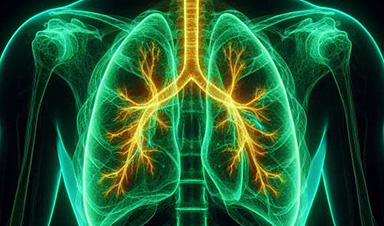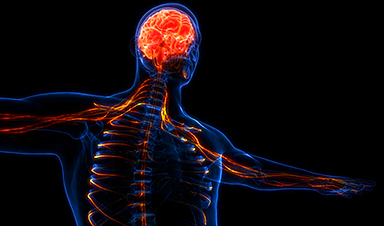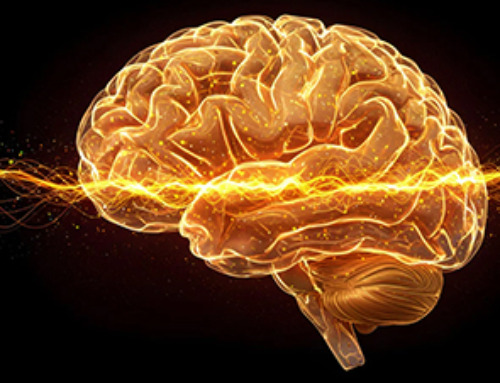POTS or “postural orthostatic tachycardia syndrome” is a poorly recognized condition we’ve been hearing more about recently.
Before COVID, this debilitating condition was not widely talked about. But during the pandemic, we’ve been learning about the strong similarities with long COVID.
In fact, our recent research shows more than three-quarters of people with long COVID we studied had POTS.
What triggers it?
Multiple studies, including our own, have shown viral infection is the most common trigger for POTS.
Then came the pandemic, with almost 800 million people infected so far with SARS-CoV-2, the virus that causes COVID. The World Health Organization says 10%–20% of people infected with COVID are likely to develop long COVID—when unexplained symptoms persist three months or more after the infection.
Now, more research is showing how long COVID resembles POTS. Many people with long COVID show similar symptoms.
What we and others have found
Our recent study found nearly 80% of people with long COVID had POTS. In people who had both and were of similar age, symptoms were indistinguishable from those who got POTS from other causes.
The people in our study either attended a specialist cardiology clinic for people with POTS or long COVID, or came via a long COVID support group on social media. So we cannot generalize our results to people managing their long COVID at home or with their GP.
Earlier this year, a review said about 30% of people with people with “highly symptomatic” long COVID also had POTS. Most (73%) met criteria for POTS and other types of dysfunction of the autonomic nervous system.
Taken together, we can conclude that many, but not all, cases of long COVID can be explained by POTS—a condition we’ve known about for years and know how to manage.
What happens if you have POTS?
We suspect some cases of POTS result from a hyper-vigilant immune response to an invading pathogen, such as a virus. This, or another trigger, affects the autonomic nervous system.
This part of the nervous system balances a vast array of functions including maintaining blood flow to vital organs, digestion, temperature control, sweating and even sexual function.
Even if the autonomic nervous system is marginally disturbed, it leads to the physiological equivalent of anarchy.
The simplest of daily tasks—such as washing your hair in the shower—can result in profound symptoms of dizziness, a racing heart, breathlessness, brain fog and general exhaustion.
In other research published earlier this year, we found people with POTS have a poor quality of life—poorer than people with chronic illnesses such as HIV, cancer, or cardiovascular and kidney disease.
A long path to diagnosis
Many patients are also forced to negotiate a diagnostic odyssey littered with tales of disbelief and dismissal by medical professionals, friends and family. Diagnosis can take years.
In our submission to the parliamentary inquiry into long COVID, we shared the experiences of people with POTS symptoms and their frustration at the lack of recognition by the medical profession. One health worker said, “I am a nurse myself and specifically brought up that I believed I had POTS after COVID infection. I was treated like a hypochondriac and told I had anxiety, which was absolutely ludicrous as I had physical symptoms […] I had many presentations to [the emergency department] with no help or diagnosis whatsoever.”
We can do better
Prompt diagnosis is vital in the face of what we suspect are rising numbers of newly diagnosed cases associated with long COVID.
Although many people with POTS report they were referred to multiple specialists before they were diagnosed, this is not always necessary.
GPs can ask you to do a ten-minute standing test to help diagnose it. They can also exclude other common causes of POTS symptoms, such as lung and heart conditions.
There is no known cure for POTS. However, once diagnosed, there are multiple things that can improve and manage the condition. A questionnaire your GP can give you can help prioritize which symptoms to manage. You then work with your trusted GP to manage these.
Increasing fluid and salt intake (under the supervision of your GP), and using full-length compression tights is recommended. These help control heart rate and blood pressure, and reduce dizziness.
Avoiding triggers is important. These include avoiding standing still for extended periods, hot showers, large meals high in carbohydrates, and hot environments.
Many people also benefit from medicines to help control their blood pressure and heart rate.
How about referral?
If referral to specialist services are required, this can be complex and expensive. There are no specialized clinics for POTS in public hospitals. Instead, POTS is mainly managed in the private sector.
Referral options can be overwhelming. People may benefit from referral to a range of health professionals to manage their symptoms, including a physiotherapist, psychologist, occupational therapist or exercise physiologist—ideally ones familiar with POTS.
All these barriers means access to diagnosis and treatment largely depends on someone having sufficient money, or being confident enough to navigate the health system.
News
Nanomedicine in 2026: Experts Predict the Year Ahead
Progress in nanomedicine is almost as fast as the science is small. Over the last year, we've seen an abundance of headlines covering medical R&D at the nanoscale: polymer-coated nanoparticles targeting ovarian cancer, Albumin recruiting nanoparticles for [...]
Lipid nanoparticles could unlock access for millions of autoimmune patients
Capstan Therapeutics scientists demonstrate that lipid nanoparticles can engineer CAR T cells within the body without laboratory cell manufacturing and ex vivo expansion. The method using targeted lipid nanoparticles (tLNPs) is designed to deliver [...]
The Brain’s Strange Way of Computing Could Explain Consciousness
Consciousness may emerge not from code, but from the way living brains physically compute. Discussions about consciousness often stall between two deeply rooted viewpoints. One is computational functionalism, which holds that cognition can be [...]
First breathing ‘lung-on-chip’ developed using genetically identical cells
Researchers at the Francis Crick Institute and AlveoliX have developed the first human lung-on-chip model using stem cells taken from only one person. These chips simulate breathing motions and lung disease in an individual, [...]
Cell Membranes May Act Like Tiny Power Generators
Living cells may generate electricity through the natural motion of their membranes. These fast electrical signals could play a role in how cells communicate and sense their surroundings. Scientists have proposed a new theoretical [...]
This Viral RNA Structure Could Lead to a Universal Antiviral Drug
Researchers identify a shared RNA-protein interaction that could lead to broad-spectrum antiviral treatments for enteroviruses. A new study from the University of Maryland, Baltimore County (UMBC), published in Nature Communications, explains how enteroviruses begin reproducing [...]
New study suggests a way to rejuvenate the immune system
Stimulating the liver to produce some of the signals of the thymus can reverse age-related declines in T-cell populations and enhance response to vaccination. As people age, their immune system function declines. T cell [...]
Nerve Damage Can Disrupt Immunity Across the Entire Body
A single nerve injury can quietly reshape the immune system across the entire body. Preclinical research from McGill University suggests that nerve injuries may lead to long-lasting changes in the immune system, and these [...]
Fake Science Is Growing Faster Than Legitimate Research, New Study Warns
New research reveals organized networks linking paper mills, intermediaries, and compromised academic journals Organized scientific fraud is becoming increasingly common, ranging from fabricated research to the buying and selling of authorship and citations, according [...]
Scientists Unlock a New Way to Hear the Brain’s Hidden Language
Scientists can finally hear the brain’s quietest messages—unlocking the hidden code behind how neurons think, decide, and remember. Scientists have created a new protein that can capture the incoming chemical signals received by brain [...]
Does being infected or vaccinated first influence COVID-19 immunity?
A new study analyzing the immune response to COVID-19 in a Catalan cohort of health workers sheds light on an important question: does it matter whether a person was first infected or first vaccinated? [...]
We May Never Know if AI Is Conscious, Says Cambridge Philosopher
As claims about conscious AI grow louder, a Cambridge philosopher argues that we lack the evidence to know whether machines can truly be conscious, let alone morally significant. A philosopher at the University of [...]
AI Helped Scientists Stop a Virus With One Tiny Change
Using AI, researchers identified one tiny molecular interaction that viruses need to infect cells. Disrupting it stopped the virus before infection could begin. Washington State University scientists have uncovered a method to interfere with a key [...]
Deadly Hospital Fungus May Finally Have a Weakness
A deadly, drug-resistant hospital fungus may finally have a weakness—and scientists think they’ve found it. Researchers have identified a genetic process that could open the door to new treatments for a dangerous fungal infection [...]
Fever-Proof Bird Flu Variant Could Fuel the Next Pandemic
Bird flu viruses present a significant risk to humans because they can continue replicating at temperatures higher than a typical fever. Fever is one of the body’s main tools for slowing or stopping viral [...]
What could the future of nanoscience look like?
Society has a lot to thank for nanoscience. From improved health monitoring to reducing the size of electronics, scientists’ ability to delve deeper and better understand chemistry at the nanoscale has opened up numerous [...]


